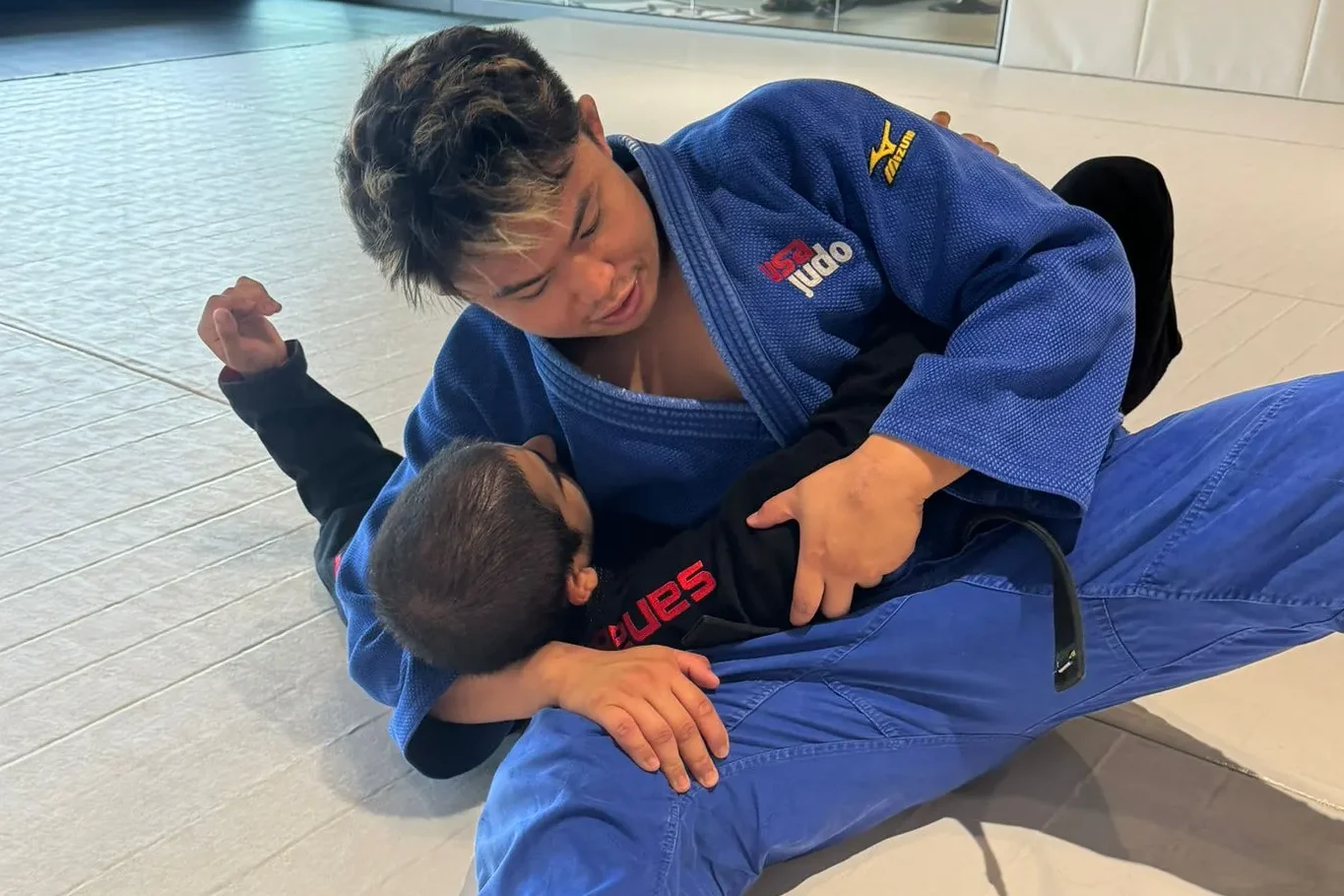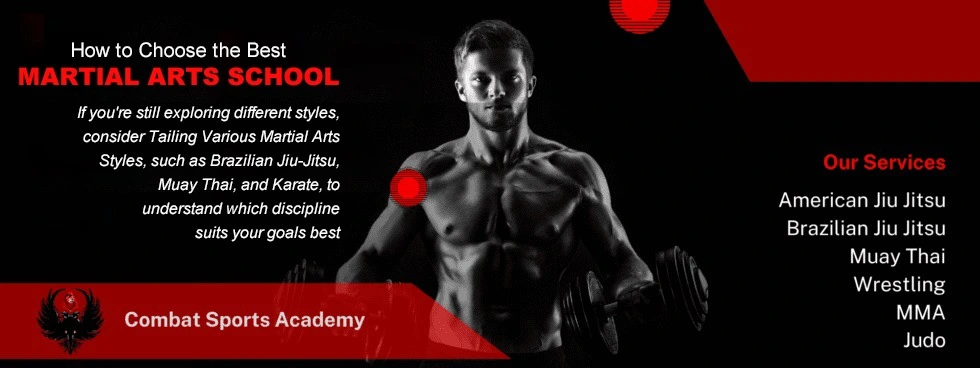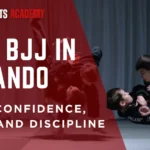Whether as a beginner or an experienced fighter looking to fine-tune your skills, choosing the best martial arts school or gym is crucial to growth and satisfaction. From the several martial arts gyms and academies all with various types of disciplines, it becomes tough to identify the starting point. Here’s what you can consider a guide that will help you pick the right martial arts school according to your needs, especially if you plan on enrolling in a Combat Sports Academy (CSA).
In stepping into a martial arts gym, one should understand and look for what they are trying to achieve. Do you want to?
These goals will also dictate which type of classes you want to pursue. If you lean more towards Combat Sports, a school specializing in Muay Thai, Brazilian Jiu-Jitsu, or Mixed Martial Arts is probably for you. Then again, if your interest lies in traditional martial arts, you may prefer schools that specialize in Karate, Taekwondo, or Kung Fu.
Define Your Objectives
Before you begin your search for martial arts classes or gyms, it’s very important to define clearly what you are going to strive for. Here are some of the common aims:
If a shape-up is your chief goal, then with improvements in flexibility and the shedding of some pounds, an apt gym for you would be one that focuses on cardio- and endurance-based training. Classes such as Muay Thai, Brazilian Jiu-Jitsu (BJJ), and kickboxing suit this purpose very well.
If you are worried about self-defense, then join a club wherein you learn Krav Maga, Karate, or Brazilian Jiu-Jitsu. These styles focus mainly on practical techniques that may be directly applied to the world.
If you think you would want to compete in Combat Sports, and then look for a combat sports academy that would offer systemic training in disciplines like boxing, Muay Thai, MMA, or wrestling. In most cases, the teaching coaches would have experience with preparation of actual fights and sparring.
Traditional martial arts, for example, are suited to those who seek discipline, respect, and a stronger mind-body integration. The most prominent providers of these concepts are Karate, Taekwondo, and Aikido.
Investigate reputation of the Martial Arts School
Once you figure out what you need, find reviews from the martial arts gyms you might visit. Here’s the drill on how you go about it:
Google around for existing or former students of theirs. Try to find testimonials about the instructors, how the community is, and what the facilities are like.
Much of what you will learn will depend on the experience and style of your instructors. You must be certain that the instructors teaching are well-versed in their disciplines, preferably with some experience of competition or years of teaching behind them.
Combat sports academies affiliated with respected martial arts organizations or whose instructors hold recognized certification from respected bodies add credibility to the training you’ll be receiving.
Visit the school and attend at least one trial class
Nothing can be substituted for actually going to the gym and viewing it first-hand. Most schools and gyms offer trial classes or drop-in sessions; this is the absolute best way to feel the atmosphere.
Is the gym clean, and is everything kept in good condition? Are the students and instructors friendly and respectful? Training in a positive atmosphere will help keep you motivated, and you’ll see better progress.
You will now be able to see if the classes are structured or seem a little untidy. Generally, you are pretty safe and learn things efficiently. You would be taken care of personally in a small sized class, but then again there is a vast possibility of training with more people in case you have a large sized class.
Assess the Gym’s timetable and location
A good martial arts gym should be able to fit into your schedule. Combat Sports Academy (CSA) is very demanding, especially if you want to represent them, so you have to find a place with favourable class times.
Is the school offering morning, afternoon, and evening classes? A fitness center with various class times is a good advantage because you can work out either before or after work or school.
Convenience is key. If the gym is too far away, it may not be easy to hold onto a commitment for long. The chances of regular attendance increase with a location close to home or your workplace.
Compare the Costs
Martial arts classes can vary significantly in pricing between one gym and another and even between locations and disciplines. A combat sports academy can be priced much higher due to the specialized coaching and training for competition.
Know exactly what you are getting for your membership. Some gyms have unlimited classes, while others may tier their pricing for a different level or style of training.
Get to know if there is anything else that will be charged separately, like equipment (such as gloves, shin guards), uniforms (like gis for Brazilian Jiu-Jitsu or Taekwondo), or competition costs if you are to compete.
Combat Sports Academies Special Considerations
Combat Sports Academy (CSA) differs considerably from the traditional martial arts schools, as they indeed pay more attention to training for a fight than any other type of martial art school. If this is your goal as well, ensure that the academy provides the following:

Is there sparring and also competition preparation? Most sports schools have fight teams that are competing regularly at the local or national level.
Ideally, your academy will have a team of coaches who can also pass on high-level experience as well, and priority for safety and proper technique to prevent injury.
Combative is warfare, therefore, the atmosphere of battle is essential in combat sports. A good community can help to keep one motivated and also give a much-needed shoulder when you are undergoing very challenging sessions of training.
The Gym’s Culture Impact
Each Martial Arts Gym has its own culture. Some gyms are super competitive. Others focus more on personal development. You want to find the gym with a culture that fits your personality and, if you are training for competitions, matches your goals.
Are most of the students there to compete, or is the gym pretty casual with an emphasis on fitness and growth? Decide if you prefer an intense, competition-driven environment, or something much more laid back.
A good gym should strive for creating a respectful and inclusive atmosphere, especially when you are a first-timer. You will enjoy your martial arts more if the community is warm and welcoming.
If you’re still exploring different styles, consider Tailing Various Martial Arts Styles, such as Brazilian Jiu-Jitsu, Muay Thai, and Karate, to understand which discipline suits your goals best.
Final thought:
Know your goals and do a bit of research on the school reputation before choosing the right martial arts gym or combat sports academy. If you are working toward achieving fitness, self-defense, or competition training, you want to make sure you visit a few schools, take some trial classes, and listen to your gut when choosing the right one for your journey.
Frequently Asked Questions:
Q1: What should I look for in a martial arts instructor?
A good instructor is one who is knowledgeable, experienced, and patient. Look for instructors with recognized certifications and affiliations. Ideally, they would be those who have competed or trained for a long time. More than technical skill, though, a good martial arts instructor is to be able to communicate effectively and foster an encouraging environment.
Q2: What do I expect from a trial class?
A trial class will give you a feel for the training environment at the gym, the quality of instruction, and the general vibe. Expect warm-up work, technique that involves some drilling, and you may even get to do some sparring or partner drills depending on the style. Pay attention to the class structure and how the instructors interact with the students.
Q3: Do I have to be in shape before coming into a martial arts gym?
честные казино с быстрыми выплатами
бездепозитные бонусы казино
играть в лучшем казино на деньги
база казино с бездепозитным бонусом
онлайн казино России
casino oyunu
No. Honestly, most martial arts gyms welcome students of all levels of fitness. As you train you will quite naturally build up strength, flexibility, and endurance. Most people see improvements in their overall fitness while training regularly.
Q4: How martial arts gym is different from the combat sports academy?
A martial arts gym could train in traditional and modern martial arts styles. A martial arts school could focus on fitness, self-defense, or personal development. A Combat Sports Academy (CSA), however, is at a more competitive level and often graduates into MMA, boxing, or kickboxing fights. Combat Sports Academy has specialized coaching and a strict training schedule oriented toward competitiveness in fighting.






